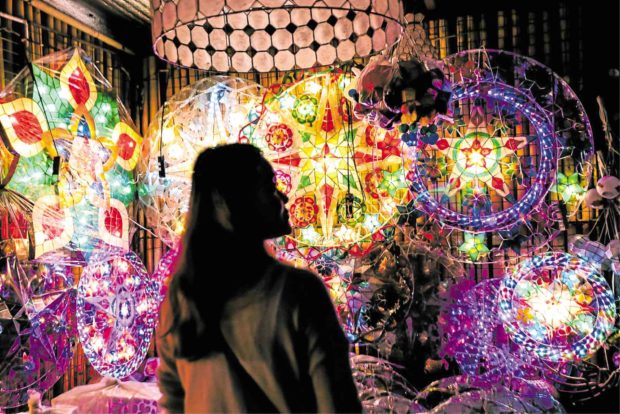Christmas is the most anticipated holiday for Filipinos. We start celebrating it as early as September, and continue celebrating even after December 25th.
Now that the long-awaited holiday is right around the corner, let’s have a look at some of the Christmas traditions that are unique to Pinoy culture.
Setting up a belen
Nativity scenes (also known as the belen) are usually put up in churches or religious spaces – well, that’s the case for most countries. But in the Philippines, setting up a belen at home is a pretty common practice.
Putting up a parol
Aside from having Christmas lights to illuminate the night, Filipinos also put up a parol, a star-shaped lantern usually made from wood, plastic, wire, or even recyclable materials. Originally, the parol is hung on lamp posts to serve as guides for mass-goers when they attend Simbang Gabi, but now the lantern is a common Christmas decoration at houses, malls, and even office buildings.
Simbang Gabi
Simbang Gabi, which means “night mass,” is a Filipino Christmas tradition wherein we attend mass in the evening or in the early hours of the morning in the 9 days leading up to Christmas day. The belief is that if you complete all 9 masses for Simbang Gabi, you will be granted a wish.
Midnight Mass
Simbang Gabi is not the only religious practice we have for Christmas. After the 9 nights of Simbang Gabi leading up to Christmas day, Filipinos also attend mass at midnight of December 25th. Attending midnight mass is connected to Simbang Gabi – if you complete all 9 masses for Simbang Gabi, it is believed that you will be granted a wish. If you did complete all 9, you get to make a wish when you attend midnight mass.
Eating Christmas foods like bibingka and puto bumbong
What’s a Christmas celebration without food? Filipino foods bibingka and puto bumbong are considered to be the two most popular Christmas treats that Filipinos love to snack on when celebrating Christmas. If you find yourself craving for these treats after attending Simbang Gabi, vendors outside the church would often sell them after mass.
https://www.facebook.com/inqpop/photos/1838317689688043
Christmas caroling
Caroling isn’t really a tradition unique to Filipinos, but we love to put our own spin to it. For other countries, caroling is usually a pretty fancy activity, with coordinated outfits and songs, but in the Philippines, caroling can be a more spontaneous thing. Kids and adults alike would go from house to house with makeshift instruments made from recycled materials, ready to belt out Christmas tunes with made up lyrics. And you know it’s really Christmas time when carolers finish their singing with “Namamasko po!”
Waking up for noche buena
Most people get together to eat Christmas dinner either on Christmas Eve or Christmas night, but Filipinos love to welcome Christmas day with noche buena, a midnight feast that usually includes traditional Filipino dishes like lechon, hamon, queso de bola, and fruit salad.
Aguinaldo or pamasko
Christmas is the season of giving, and for kids it’s a widely anticipated holiday because that means their ninangs and ninongs could give them pamasko. Ang pao are red envelopes filled with some cash, usually gifted by ninangs and ninongs to kids so they can either save up the money or spend it to treat themselves for the holiday season.
Continuing the Christmas celebration with media noche
Christmas is on December 25th, and for most countries the celebration ends when Christmas day ends. But in the Philippines, the celebration doesn’t stop there. Since it’s just a week away from New Year’s Day, Filipinos throw another feast called media noche. It’s also a midnight feast, but this time it’s for welcoming the new year.
Media noche is for sure a loud and vibrant celebration in the Philippines, because the belief is that loud sounds will keep the bad spirits away from the incoming year, so Filipinos make as much noise as possible, be it with car horns, instruments, fireworks and torotots.
Other POP! stories you might like:
10 DIY tips for recycling your Christmas gift wrappers and cards
Make your holidays more meaningful with heartwarming OPM this Christmas
5 books by contemporary Filipino authors to consider gifting this Christmas





